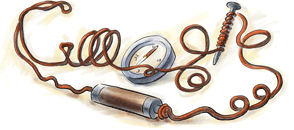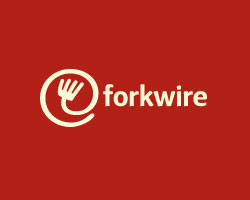I am an avid GOOGLER, I know what you are thinking? Yes, I searched for the word and found a colloquial English instance of the word. One that means a "regular habitual user of the Google Search Engine", the second one does not apply to me.
Google fascinates me in how it not just organizes data and translates it into knowledge for users like myself but adds to the overall process of creating awareness through fun and exciting tid-bits of visuals. Take for instance the Google logos -

The birth date of Hans Christen Orsted would have been the last thing on my mind this morning but the fun fact gave me a reason to spend additional time on the site, add to the search traffic on Google and visit Wikipedia (not associated with Google) to read up on Orsted's contributions to electro-magnetism, etc. Yesterday it was the Meteor shower and so on.
I know of a very short list of ubiquitous and structured organizers of data and knowledge, starting with Dmitri Mendeleev the developer of the periodic table, Melvil Dewey the developer of the Dewey Decimal library classification system and now Google. Obviously the value addition from Google far exceeds those of Mendeleev and Dewey given the reach and penetration of the internet across the globe and generations today.
Whats most interesting is the subtle yet fun ways the Google engages with the user community giving them reason to spend ever more time on their site as Brand Google aspires to organize knowledge and create wisdom!











